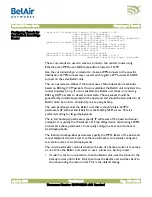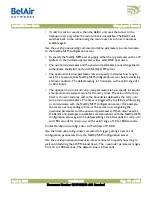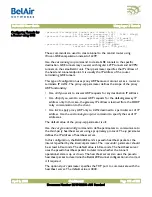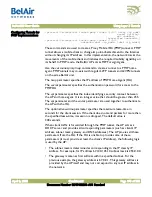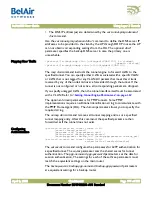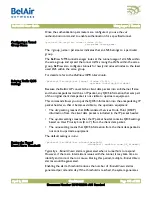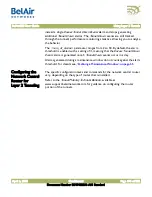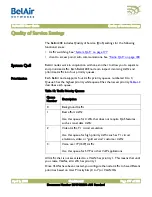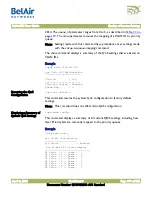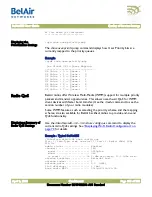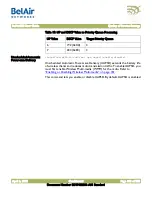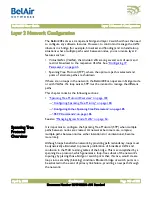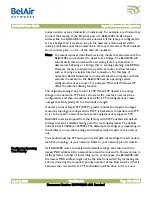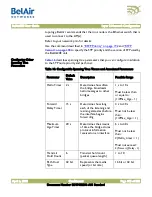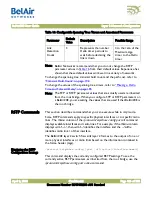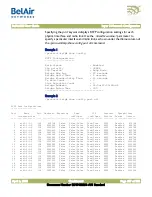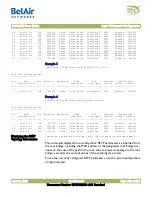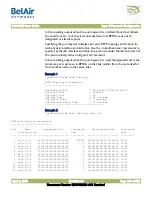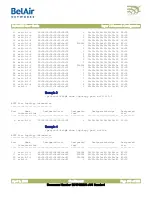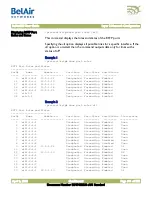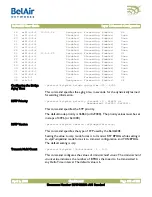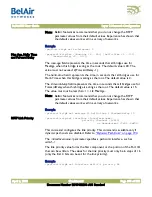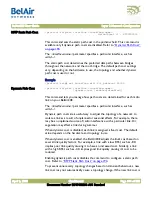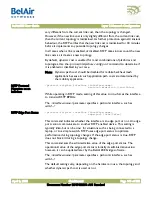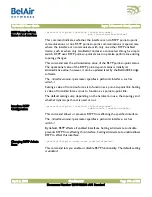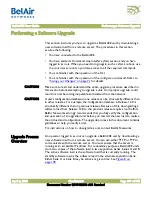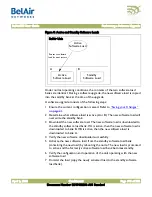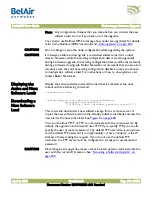
BelAir20E User Guide
Layer 2 Network Configuration
April 2, 2012
Confidential
Document Number BDTM02201-A01 Standard
Loops can also occur accidentally or maliciously. For example, a technician may
connect their laptop to the Ethernet port of a BelAir20E and also have a
wireless link to a BelAir20E in the same network. If the laptop is configured to
act as a bridge then it creates a loop in the network, and broadcast traffic
quickly proliferates until the slowest link in the loop is saturated. This broadcast
storm renders part—or all—of the network unusable.
Note: To prevent issues as described previously, clients that associate with the
BelAir20E are not allowed to operate as a bridge. The BelAir20E will
automatically disassociate without warning from any client that is
detected as behaving as a bridge; that is, sending spanning-tree BPDUs.
However, clients are allowed to operate as router to allow features
such as sharing a wireless Internet connection. For this type of
operation, BelAir Networks recommends that the computer with the
wireless connection to the BelAir20E have its operating system
configured to act as a router. For example, Microsoft Windows XP
offers the
Internet Sharing
function.
The original spanning tree protocol is STP. When STP detects a topology
change in the network, STP blocks all user traffic, creates a new loop-free
configuration, and then re-enables user traffic. STP reconfigurations create
outages that are typically 30 to 60 seconds in length.
A newer protocol, Rapid STP (RSTP), greatly reduces the length of outages
caused by topology reconfigurations. RSTP is backwards compatible with STP
so it can be used in networks where some equipment only supports STP.
BelAir20E units are shipped from the factory with RSTP enabled and default
settings that are a suitable starting point for most deployments. The default
node priority is 36864 (or 0x9000). The default port settings vary depending on
the hardware in use, the topology and whether dynamic path cost is used or
not.
You should adjust the STP node priority and path cost settings for each node to
match the topology of your network. Refer to your network plan
for details.
Configuring Spanning
Tree Priority
If all BelAir20E units are enabled with default settings, the switch with the
lowest MAC address in the network becomes the root switch. However, due to
traffic patterns, number of forwarding ports, or line types, the BelAir20E with
the lowest MAC address might not be the ideal root switch. By increasing the
priority (lowering the numerical priority number) of the ideal switch so that it
becomes the root switch, an STP recalculation will be done to form a new

